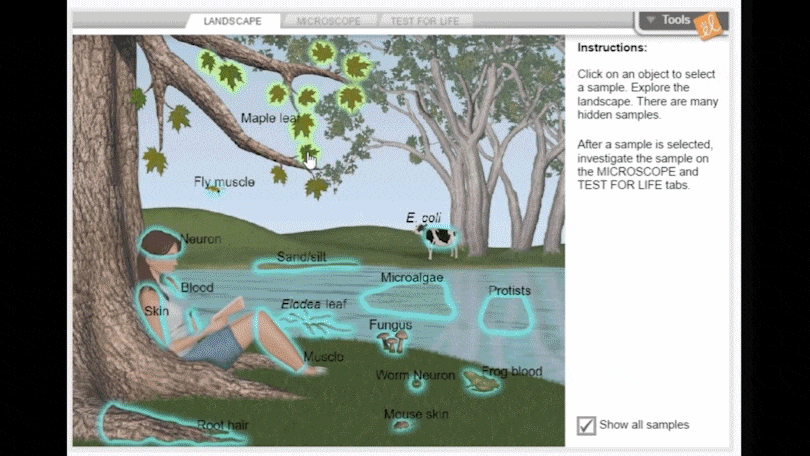Build Deep Understanding with Inquiry-based Learning

What is inquiry-based learning?
The best way to approach the subject of inquiry-based learning is actually with an inquiry: what is it?
Traditional styles of education place the teacher at the head of the classroom, laying out facts for students to memorize and show mastery through testing. Inquiry-based learning (IBL), developed in the 1960’s, seeks to flip that model on its head, as instructors and students share responsibility for learning. It is a student-focused approach, but the extent of teacher-directed vs. student-directed learning can vary. IBL is also flexible in lesson plan structure, as activities and assignments can be designed such that students work independently or collaboratively to solve problems through both in-class work and fieldwork. Support inquiry in your classroom with in-class strategies.
Indiana University Bloomington defines inquiry-based learning as an “instructional model that centers learning on solving a particular problem or answering a central question.” However, the process consists of posing questions to students on a particular theme or topic or, in some cases asking students to develop their own questions after exploring a topic, as opposed to solving a problem the instructor posed.
Put another way: KWL charts, which depict what students KNOW (K), what they WANT to know (W), and then, eventually, what they LEARN (L), are popular classroom tools. Inquiry-based learning focuses on the “want to know” section of a KWL chart. True inquiry means a student will pursue the answers themselves instead of a teacher dispensing the information through lecture and direct teaching. IBL builds skills to help students reach a high level of thinking and analysis. In the last few decades, research has shown academic achievement, reasoning skills, and intrinsic motivation are greater with inquiry-based learning than traditional methods.
Inquiry-based learning in practice
“The key to [inquiry-based learning] is to teach students how to ask their own questions, and to discern good questions from bad questions,” explains Dr. Alan Edmunds, Associate Professor in the Faculty of Education at Western University.
Inquiry-based learning uses diverse approaches to learning, such as small-group discussion and guided learning. Instead of rote memorization of facts and material, students learn by doing. This allows them to build knowledge through exploration, experience, and discussion. Lessons are designed so that students make connections to previous knowledge, bring their own questions to learning, investigate to satisfy their own questions, and develop ways to try out their ideas. Such investigations can extend over a long period of time. Students might communicate through journal writing, oral presentations, drawing, graphing, charting, etc. They then revise their explanations as they learn.
Generally, inquiry learning embodies the following learning processes for students:
- Developing their own questions
- Gathering supporting evidence to answer the question(s)
- Explaining the evidence collected
- Connecting the explanation to the information gathered during the investigative process
- Arguing for and justifying the explanation
When classrooms buy into inquiry, students ask and answer questions that grow in rigor as their investigation advances. When practiced consistently, all learners benefit from inquiry by giving them the opportunity to synthesize their learning themselves.

Inquiry learning in STEM education
Inquiry learning shifts the focus of a lesson from simply getting an answer to using evidence and strategies to develop or revise an explanation. In a science setting, we can compare two different pedagogies- a more traditional approach versus IBL:
- Standard: Label the parts of the leaf diagram you have been given. Based on the information provided in your textbook, provide a brief explanation of the function of each part you have labeled.
- Inquiry-based: Examine a selection of at least four leaves you find outside the classroom. Inspect them closely. In what ways are they similar? In what ways are they different? What purpose do you think is served by each part that is common to all of these leaves?
In a math classroom, the traditional method of teaching involves solving equations and plugging in numbers. The focus here is solely on computation. With IBL, teachers may focus less on math calculations and more on supporting students as they determine what information is valuable and how this information applies in a real-world setting. Teachers can cultivate their students’ comprehension of the topic with guided inquiries. The following example illustrates the use of an inquiry-based math strategy in the classroom:
An inquiry-based classroom discussion helps learners understand the concept of slope. The teacher draws a picture of two hills: one taller and one longer. The teacher asks, “Which hill is steeper?” The question may stimulate a lively discussion or a debate about the correct answer.
Inquiry-based learning can enhance the learning experience for students—fostering curiosity, implanting a love of learning, and giving them critical thinking and communication skills they will need outside of the classroom.


ExploreLearning Gizmos are interactive online simulations and case studies for math and science that power inquiry and understanding through hands-on learning and experimentation.
LEARN MORESign up to get the latest updates from ExploreLearning via occasional email.